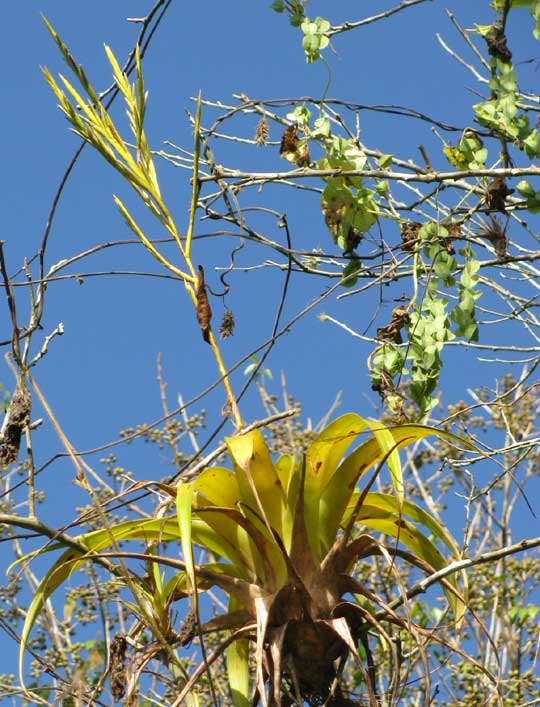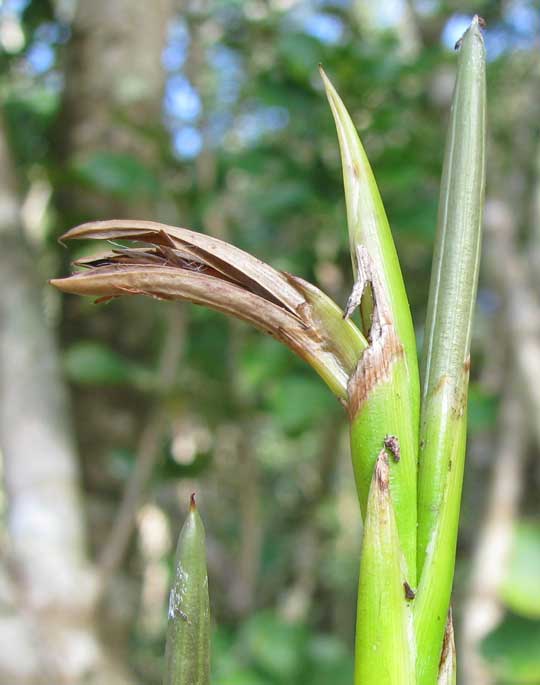Excerpts from Jim Conrad's
Naturalist Newsletter

from the November 14, 2010 Newsletter issued from Hacienda Chichen Resort beside Chichén Itzá Ruins, central Yucatán, MÉXICO; limestone bedrock, elevation ~39m (~128ft), ~N20.676°, ~W88.569°
GIANT AIRPLANT
Bromeliads, members of the Bromeliad Family, the Bromeliaceae, are tufted plants normally growing epiphytically on tree limbs, though Pineapple plants are a notable terrestrial member of the family. They're not parasites, for they rob nothing from their host plants. When it rains they store water in their leathery blades, and take their nutrients from dust, detritus and the like accumulating on tree branches. Sometimes orchids and aroids are confused with bromeliads, but those plants have completely different flowers and belong to their own plant families.
In general, if you're in the American tropics, the more humid the air is, the more bromeliads there'll be. That means that in the Yucatan the farther southeast you go, the more bromeliads you'll see. Here in the central Yucatan older trees often bear a good number, but not as many as they'd have farther to the southeast, closer to Belize.
We've already looked at our most common bromeliad here, Tillandsia fasciculata, which you can review at www.backyardnature.net/yucatan/tilland1.htm.
Another common bromeliad species in our area is the one shown above.
That's TILLANDSIA ELONGATA, occuring from southern Mexico south into northern South America. In North America English speakers tend call all bromeliads airplants, though I think calling them bromeliads would be much more appropriate..
The plant in the picture is yellowing because now that it's flowered and fruited it'll die -- which is normal for most bromeliad species. They may live up to 20 years before they flower. Tillandsia elongata's bowl-like shape catches leaves and rainwater, providing good habitat for many kinds of invertebrates.
A picture of a brown, curved fruit-capsule opening like the beak of a toucan, revealing numerous white-parachuted seeds inside ready for wind dispersal is shown below:
